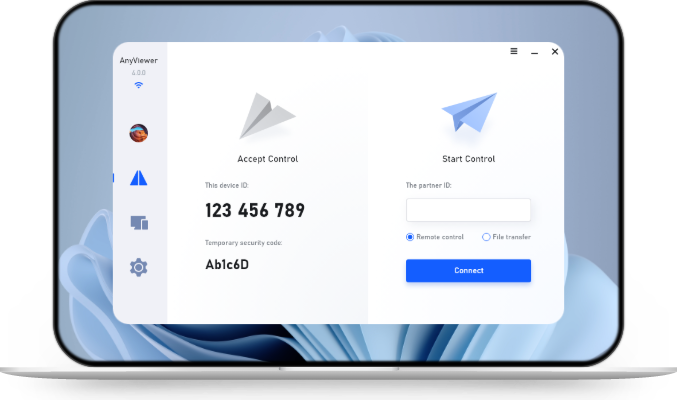How to Remote Into a Friend’s Computer [Window 10/11 Solutions]
How can I remote into a friend’s computer easily? If you need to give support to your friend remotely, then this post might be great for you to know how to remote desktop into a friend's computer. Keep reading!
How can I remote into my friend's computer?
Being the go-to tech expert has its ups and downs. Sure, it’s flattering when friends rely on your skills—but when they run into computer trouble, you're expected to swoop in and save the day, even if you're miles away. Thankfully, you don’t always need to be physically present to help out.
For basic support, video chat apps can get the job done. But if you need hands-on control, both Windows and macOS come with built-in remote access features that work seamlessly when connecting within the same operating system.
If you're connecting from Windows to Windows or Mac to Mac, the process is smooth and straightforward—no extra downloads are required. Cross-platform support takes a little more effort, but with the right tools, it’s still totally manageable.
How to remote into a friend's computer via AnyViewer [Best cross-platform option]
If one of you is using a Windows PC and the other is on macOS, you’ll need a third-party solution to bridge the gap. That’s where AnyViewer comes in—it’s a top-tier cross-platform remote desktop tool designed for smooth, secure connections between Windows and Mac devices.
Here are some key benefits of using AnyViewer:
- Cross-Platform Compatibility – Seamlessly connects Windows and macOS systems without hassle.
- Fast & Stable Performance – Delivers responsive control with minimal lag, even over long distances.
- Secure Connection – Protects your sessions with advanced encryption and robust security protocols.
- Easy Setup – Simple to install and use, making it ideal for both tech pros and casual users.
- Free for Personal Use – Offers a solid free version with generous features, perfect for occasional support tasks.
- Advanced Plans for Businesses – Offers scalable professional packages tailored for teams with greater demands.
Step 1. Download, install, and launch AnyViewer on two devices. Go to Log in, and then click Sign up. (If you already have signed up on its official website, you can login directly.)
Step 2. Once you're logged in to AnyViewer, you'll see a confirmation that the login was successful. Your device will automatically be linked to the account you signed in with. If you want to connect additional devices under the same account, it's best to upgrade to a Professional or Enterprise plan, which allows unlimited concurrent sessions.
Step 3. On the computer you intend to use for remote control, you'll see a list of all devices logged into the same AnyViewer account. Simply click One-click control to initiate unattended remote access to any of those devices instantly.
How to remote into a friend’s Windows PC from another [Windows to Windows options]
If both computers are running Windows, you’ve got several built-in options at your fingertips. The best choice often depends on which version of Windows you're using. Some tools are better suited for newer systems, while others work across a broader range. Ultimately, it comes down to what’s most convenient for your specific setup.
Windows Remote Assistance: For Windows 7, 8, and 10
If your friend or family member is using Windows 7, 8, or 10—and you’re also on Windows 10—you’ll need to rely on the older Remote Assistance tool. While it offers similar functionality to Quick Assist, it’s noticeably less user-friendly and a bit more cumbersome to navigate.
☞ On your friend’s PC
Step 1. Right-click on "This PC" and then select "Properties".
Step 2. Locate "Remote settings" on the left pane.
Step 3. Switch to the "Remote" tab, and then tick the option "Allow Remote Assistance to this computer".
Step 4. Press "Win + R", then type in "msra" in the box, and hit "OK" to open Remote Assistance.
Step 5. Choose "Invite someone you trust to help you" and click "Save this invitation as a file".
Step 6. Save this file on the desktop and a pop-up window that contains a password will appear. Ask your friend to send the file and password to you.
☞ On your PC
Step 1. Choose "Help someone who has invited you".
Step 2. Double-click on the file, enter the password, and click "OK".
Step 3. Then a pop-up request will display on your friend’s PC, click on "Yes". Then the screens on both sides are the same.
Step 4. On your PC, click on "Request control".
Step 5. Then a window will pop up on your friend’s PC. Ask your friend to click on OK, and then you can remotely access a friend’s PC.
Quick Assist: For Windows 10 and 11
Quick Assist is a built-in remote access tool available on both Windows 10 and Windows 11, allowing one user to remotely view or control another Windows device for support or troubleshooting.
Step 1. On your computer, search "Quick Assist" in the search box and open it. If you are the one who gives assistance, choose "Assist another person" under the "Give assistance".
Step 2. Enter the email or phone number, click on "Next", input the password and click "Sign in". Then you will get a security code valid for 10 minutes.
Step 3. For the one who gets assistance, enter the security code in the main interface of the Quick Assist, and click "Share Screen".
Step 4. Choose "Full Control" or "View Screen", and then click "Continue". On the remote PC, click on "Allow".
Step 5. Now, you can provide help remotely.
Remote Desktop Connection: For Windows 10, 11 Pro and Enterprise
Another option, Remote Desktop Connection, lets you take full control of the other person’s computer, allowing you to interact with it just like you were sitting right in front of the screen.
☞On your friend’s PC
1. Enable Remote Desktop in Settings
Navigate to: Settings> System> Remote Desktop > Turn on the Enable Remote Desktop switch, and then click the Confirmbutton.
2. Allow remote connections to this computer in Control Panel
Step 1. Select Control Panel> System and Security> System, under the "System" section, click Remote Settings.
Step 2. Select the box next to "Allow remote connections to this computer" and then click OK.
3. Get the IP address and computer name
Step 1. Press Win + Ron the host computer to open the Run dialog box. Enter "cmd" and then hit OK.
Step 2. To get the IP address for Remote Dekstop, enter the command "ipconfig" and note the IPv4 Address.
Step 3. To get the PC name for Remote Desktop, typein"query user", andyou can see your PC name.
☞On your PC
Step 1. On the client computer, press Win + R, and type "mstsc" in the Run Dialog box to open Remote Desktop connection.
Step 2. Click Show Options, type in the IP address and name of the host computer, and then clickConnect.
Step 3. Input the password of the client computer in the pop-up window, and press OK.
How to remote into a friend’s Mac from another via Apple Remote Desktop [Mac to Mac option]
Apple Remote Desktop is a robust solution created by Apple for remotely managing and controlling Mac computers across a network. It’s especially useful for IT administrators, offering features like software installation, remote support, real-time monitoring, and system maintenance.
However, it’s worth noting that this is a paid tool—and the price can be relatively steep compared to other options. For those seeking a more budget-friendly solution, exploring a free alternative to Apple Remote Desktop is highly recommended.
☞On your friend’s Mac
Step 1. Navigate to "System Preferences" and select "Sharing."
Step 2. Check the box next to "Remote Login" and choose "Allow access for: All users."
Step 3. Next, check the box next to "Remote Management" and configure the settings according to your preferences, including user access permissions.
Step 4. Once configured, close the window to save your changes.
☞On your Mac
Step 1. Open the Apple Remote Desktop application on your administrator Mac.
Step 2. Click on "Scanner."
Step 3. Choose "Local Network."
Step 4. Select the computer(s) you wish to add.
Step 5. Drag the selected computers to "All Computers" or a specific group on the sidebar.
Step 6. Enter the standard username and password, then click "Add."
Step 7. Once the remote computers are added, select the one you want to control from the list and click the "Control" button.
Step 8. After establishing a connection, you will gain remote control of the selected Mac computer.
Conclusion
If you're wondering how to remote into a friend's computer, there are several easy options. Windows and macOS have built-in tools like Quick Assist, Remote Assistance, Remote Desktop, and Apple Remote Desktop. For cross-platform access, AnyViewer is the best choice. It's free for personal use, secure, and super easy to set up. Just install it, log in, and you can take control of your friend’s device with a single click—no matter the distance.

